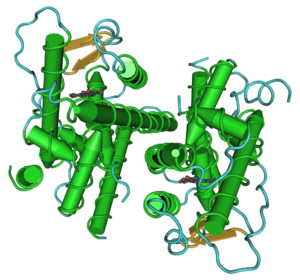A new strategy for developing drugs to treat cancer, multiple sclerosis, Alzheimer’s and cardiovascular diseases.
Researchers at the University of Houston (UH) are recommending a new strategy for developing drugs to treat cancer, multiple sclerosis, Alzheimer’s and cardiovascular diseases.
In an invited review published in the October issue of Nature Reviews Drug Discovery, scientists at the Center for Nuclear Receptors and Cell Signaling (CNRCS) at UH outline the results of years of research following the team’s 1996 discovery of the estrogen receptor beta (ER?).
“We have known for some time that female sex hormones — estrogens — influence a number of functions in the human body,” said Dr. Jan-Åke Gustafsson, UH professor and CNRCS director. “Only recently have we and others found that one of the estrogen receptors — ER? — is a potential target for the treatment of Alzheimer’s and other chronic diseases.”
Gustafsson is best known as a leading expert on estrogen receptors, being credited with the earlier discovery of ER? during his tenure at the Karolinska Institutet in Stockholm, Sweden. In Houston since 2009, Gustafsson has hand-selected a team of experts to build on his initial breakthrough. For this latest review, the team was invited to share the most recent results of their research.
The two estrogen receptors, estrogen receptor alpha (ER?) and ER?, have their effects on cells via activation by hormones circulating in the body. The influence of these receptors in the human body spans such diverse functions as fertility, metabolism, and the cardiovascular and nervous systems. Due to their expanded role in human health, these receptors represent an ideal target for drugs and therapeutic treatments.
Studies conducted following Gustafsson’s discovery of ER? have shown intriguing differences in tissue distribution and gene regulation when compared to the role of ER?. There has since been an intense effort in both academia and industry to develop ER?-specific research tools and potential therapeutics for a multitude of conditions.
One successful example of using ER? as a drug target has proven the receptor as an effective cancer cell combatant in breast cancer tissue. Closer examination of human breast cancer cell lines determined that, while ER? alone may stimulate the development of tumors, the combined presence of ER? and ER? reduced and prevented tumor development.
“These modulators are well-established in the treatment of breast cancer and osteoporosis,” Gustafsson said. “We now are pushing the limits of their influence to develop new treatments and ultimately save lives.”
Read more . . .
Bookmark this page for “New Drug Strategies” and check back regularly as these articles update on a very frequent basis. The view is set to “news”. Try clicking on “video” and “2” for more articles.








